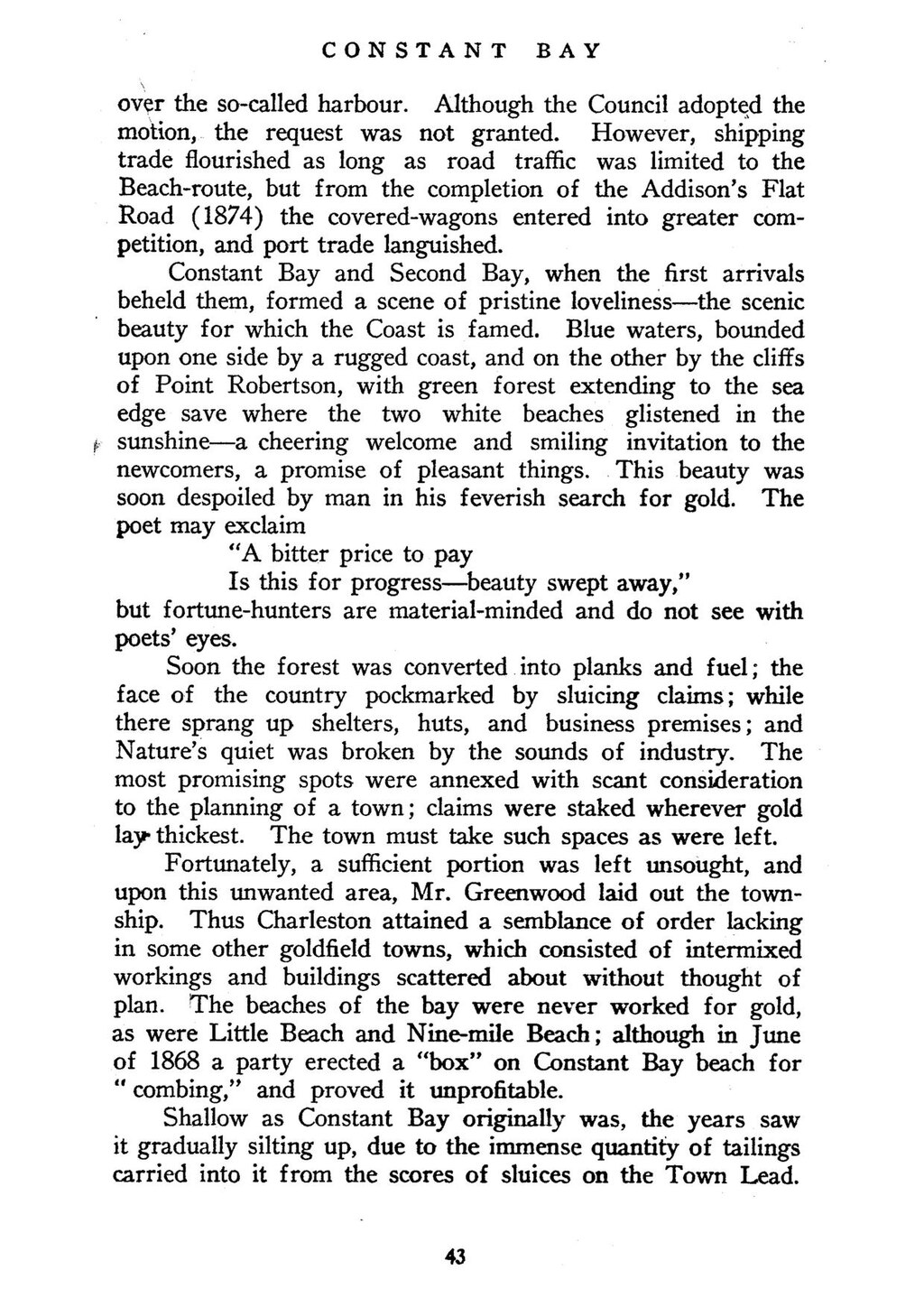CONSTANT BAY
over the so-called harbour. Although the Council adopted the motion, the request was not granted. However, shipping trade flourished as long as road traffic was limited to the Beach-route, but from the completion of the Addison’s Flat Road (1874) the covered-wagons entered into greater competition, and port trade languished.
Constant Bay and Second Bay, when the first arrivals beheld them, formed a scene of pristine loveliness—the scenic beauty for which the Coast is famed. Blue waters, bounded upon one side by a rugged coast, and on the other by the cliffs of Point Robertson, with green forest extending to the sea edge save where the two white beaches glistened in the sunshine—a cheering welcome and smiling invitation to the newcomers, a promise of pleasant things. This beauty was soon despoiled by man in his feverish search for gold. The poet may exclaim
“A bitter price to pay
Is this for progress—beauty swept away,”
but fortune-hunters are material-minded and do not see with poets’ eyes.
Soon the forest was converted into planks and fuel; the face of the country pockmarked by sluicing claims; while there sprang up shelters, huts, and business premises; and Nature’s quiet was broken by the sounds of industry. The most promising spots were annexed with scant consideration to the planning of a town; claims were staked wherever gold lay thickest. The town must take such spaces as were left.
Fortunately, a sufficient portion was left unsought, and upon this unwanted area, Mr. Greenwood laid out the township. Thus Charleston attained a semblance of order lacking in some other goldfield towns, which consisted of intermixed workings and buildings scattered about without thought of plan. The beaches of the bay were never worked for gold, as were Little Beach and Nine-mile Beach; although in June of 1868 a party erected a “box” on Constant Bay beach for “combing,” and proved it unprofitable.
Shallow as Constant Bay originally was, the years saw it gradually silting up, due to the immense quantity of tailings carried into it from the scores of sluices on the Town Lead.
43
